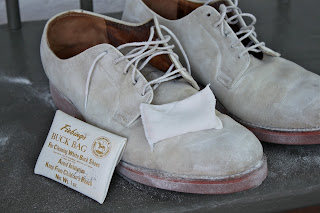 |
| Wheeler library, gallery view |
The room in question is the library in the Lake Forest, Illinois, house of Mr. and Mrs. Leslie Wheeler. Designed by David Adler (1882-1949), one of the greatest residential architects of the first half of the twentieth century, the room was decorated by his equally talented sister, Francis Elkins (1888-1953), with whom he collaborated extensively. What an exceptional team they were, this superbly gifted brother and sister, and how lucky we are that so much of their work was photographed (in the case of this room, in 1934) and recently published in books by Stephen Salny and the Art Institute of Chicago.
David Adler in 1904 Francis Elkins in 1938
 |
| The coveted Adler monograph; photo by Boy Fenwick |
Written by Richard Pratt and published in 1970, the monograph is David Adler: The Architect and His Work. It was and remains much sought-after by collectors, libraries, and practitioners of traditional (or classical) architecture, as it was the only book on Adler and his work available until recently. It was, as it turns out, a very valuable book, too, and could only be had at a price that reflected its rarity and the fevered demand for it. Looking through it for the first time I was determined to own a copy of it, but I was only able to do so many years later when my pocketbook could support such an extravagance. It remains to this day one of the treasures of our book collection at Darlington House.
 |
| Wheeler library, fireplace wall |
The Wheeler library is a room that I return to again and again in my mind's eye, as it is not only a handsome room, but the stuff of fantasy for me: a special-purpose room dedicated to the pleasures of reading, set apart from the owners' other sitting and entertaining rooms. We have a room at Darlington, which we call our Snuggery, that holds many of our books; but I would not say that it is a library, per se. For our Snuggery is not the sole repository for our books, which are scattered throughout our house in bookcases and piles, and in it resides, also, our lone television. Frankly, we use our Snuggery more as a cozy, personal sitting room than we do as a place to read, contemplate, and study books. I would be thrilled to live in a house that had an actual library, such as the one the Adler/Elkins duo created for the Wheelers.
 |
| Our copies of Adler/Elkins books; photo by Boy Fenwick |
So, what is it, exactly, that I so admire about the Wheeler's library?
- It is an attractive, symmetrical, well-proportioned room, embellished only with severe moldings and restrained architectural elements; it relies on the integrity of the materials for its beauty rather than surface decoration;
- It is a special-purpose room, designed for the holding and studying of the Wheeler's extensive collection of books, set away from the house's more public rooms;
- While clearly within a residence, it attractively resembles an academic library, with stacks projecting into the room at regular intervals;
- It is paneled and fitted out with pickled pine, a great favorite of mine;
- It is filled with an array of handsome furnishings spanning several hundred years, including English furniture from the eighteenth century and modern chairs and lamps by Jean Michel Frank--the modern master whose work Mrs. Elkins introduced and championed in this country;
- The modern upholstered seating is both stylish and commodious, and a comfortable place to wile away hours reading;
- The windows are hung with the simplest, plain curtains;
- It is fitted out with good, modern lamps and the niceties of comfort and convenience--one need not look too far for a place to rest one's drink or set one's pipe, if one smoked such a thing;
- The gorgeous, polished, antique parquet-de-Versailles floor is bare of carpets, giving the room a clean and fresh look, and it is scattered with boldly graphic Zebra skins--long before such skins had become the decorating cliche of the first decade of this century;
- And it has a gun rack! And not just any gun rack, either, but one built into the paneling and surrounded by a frame based on ones found on early English Georgian mirrors.
 |
| Wheeler library gun rack |
Finally, the Wheeler library channels for me on a very personal level a number of academic libraries that I spent many pleasant hours in years ago, first as a student at Sherborne School, a boys' public school in England, and later as an undergraduate at Yale.
 |
| Sherborne School library Image courtesy of Sherborne School |
 |
| Sterling Memorial Library Reading Room Image courtesy of Yale University |
Unless noted, all images are courtesy of Francis Elkins: Interior Design by Stephen M. Salny, published by W. W. Norton & Company. Additional images of the talented Adler/Elkins partnership can be found in Stephen M. Salny's The Country Houses of David Adler, also published by W. W. Norton, and in the Art Institute of Chicago's David Adler, Architect: The Elements of Style, published by the Art Institute in association with the Yale University Press.




























































































